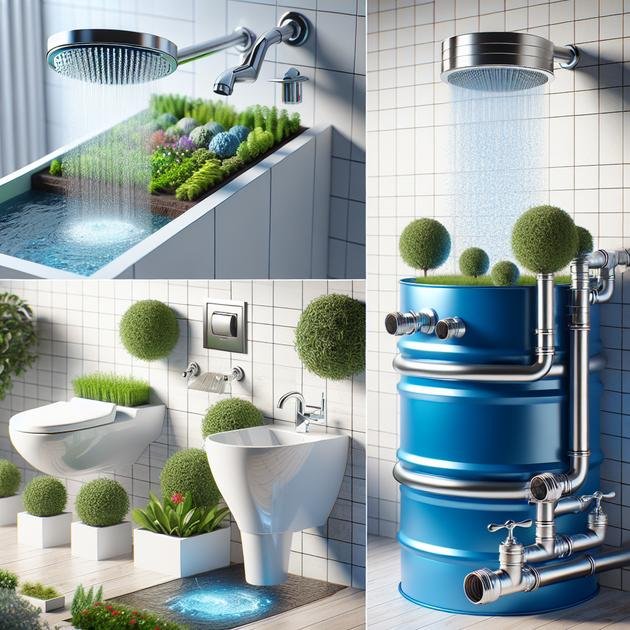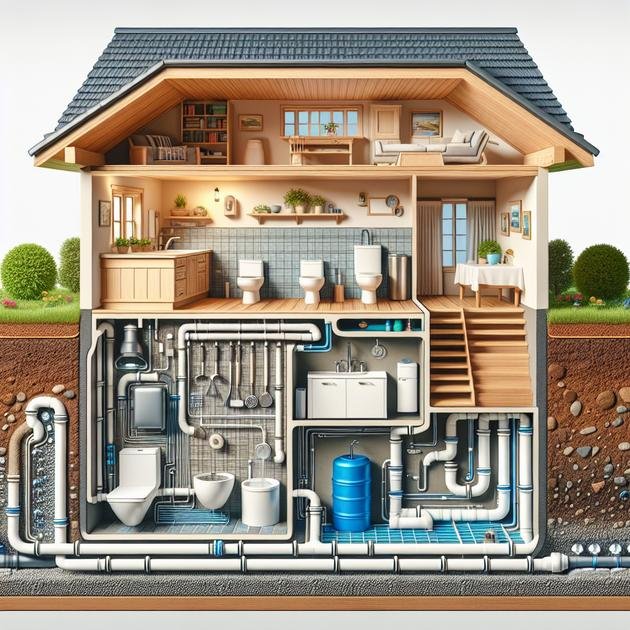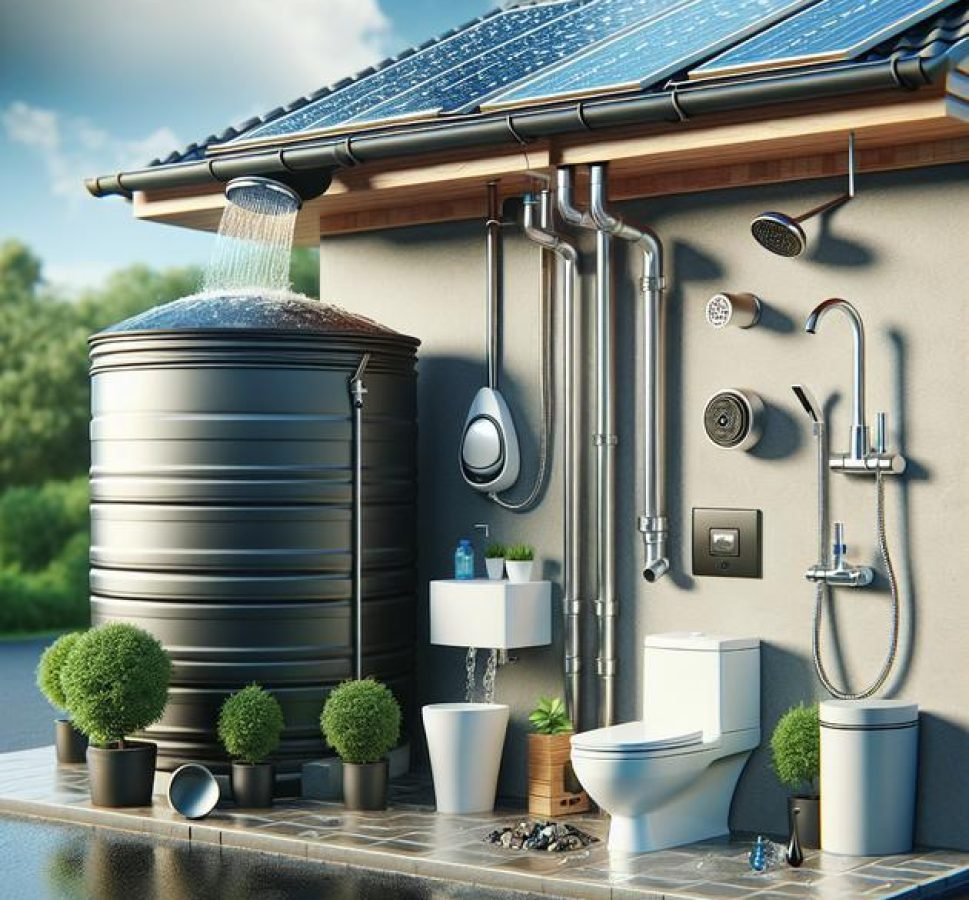Reduce water usage at home by tracking consumption, installing efficient fixtures, fixing leaks promptly, using rainwater harvesting, practicing smart irrigation, and educating family members on conservation habits.
Have you noticed how much water your household actually uses? Discovering smart ways to reduce water usage can save you money and help the planet. Let’s dive into practical ideas that make a real difference without complicating your routine.
understanding your water consumption patterns
Understanding your water consumption patterns is the first step to effectively reduce water usage at home. Start by checking your water bills to see how much water you use monthly and look for any unusual spikes. Consider installing a water meter or using smart water monitors that provide real-time data on your household’s water usage.
Track daily usage
Keep a log of when and where water is used most in your home, such as during showers, dishwashing, or watering the garden. This helps identify high consumption areas to target for savings.
Identify wasteful habits
Look out for common water-wasting activities like leaving taps running while brushing teeth or long showers. Small behavior changes can make a big difference when you know your patterns.
Use technology for insight
Smart devices like leak detectors or water flow sensors alert you to leaks and excessive use instantly. Installing these can prevent hidden water losses and reduce your bills.
By knowing exactly how and when you use water, you empower yourself to make smarter choices that save resources and money.
installing water-efficient fixtures
Installing water-efficient fixtures is a practical way to reduce water usage at home without sacrificing comfort. Start with low-flow faucets, showerheads, and toilets, which use less water than older models. Many modern fixtures are designed to maintain strong water pressure while cutting water flow significantly.
Choosing efficient fixtures
Look for products labeled with the EPA WaterSense label, which guarantees they meet strict efficiency criteria. These fixtures can cut water use by 20-60% compared to standard models.
Replace old toilets
Older toilets can use up to 7 gallons per flush, while water-efficient ones use 1.28 gallons or less. Upgrading your toilet can save thousands of gallons annually.
Upgrade taps and showerheads
Low-flow aerators on faucets reduce flow without reducing pressure, ideal for kitchens and bathrooms. Similarly, efficient showerheads mix air with water to provide a satisfying shower using less water.
These simple upgrades are cost-effective and start saving water immediately, providing a powerful way to cut your household’s water footprint.
using rainwater harvesting techniques

Using rainwater harvesting techniques is an effective way to reduce water usage at home by capturing and storing rainwater for later use. This method helps reduce dependence on municipal water and cuts down water bills.
Basic components
A rainwater harvesting system typically includes a roof catchment area, gutters, a storage tank or barrel, and a filtration system to remove debris. Proper setup ensures clean water collection and storage.
Uses of harvested rainwater
Collected rainwater can be used for watering plants, flushing toilets, cleaning outdoor areas, and other non-potable needs. This approach conserves treated water for essential daily activities.
Benefits to the environment
Rainwater harvesting reduces stormwater runoff, prevents soil erosion, and helps recharge groundwater. It also lessens the strain on municipal water sources, especially during dry seasons.
Installing rain barrels is a simple start, while more advanced systems with pumps and filters provide greater capacity and flexibility. Either way, rainwater harvesting can be a smart addition to any water-saving strategy.
practical tips for kitchen water savings
The kitchen is one of the biggest water consumers in the home, so small changes here can reduce water usage significantly. Start by using a basin or plug in the sink to wash dishes instead of washing under running water.
Efficient dishwashing
If you use a dishwasher, run it only when it’s full to save water. Modern dishwashers use less water than hand washing but only if operated efficiently.
Fix dripping taps
A dripping kitchen faucet can waste gallons of water daily. Check for leaks regularly and fix them promptly to prevent unnecessary water loss.
Wash fruits and vegetables wisely
Use a bowl of water to wash fruits and veggies instead of rinsing them under running water. You can reuse this water for plants afterward.
Use cold water when possible
Heating water consumes energy. Use cold water for tasks like rinsing or cleaning to save both water and energy.
Being mindful of these practical kitchen habits helps cut down your water bill and contributes to a greener home.
bathroom habits that save water daily
Bathroom habits can greatly impact your overall water usage. Simple changes in your routine can help reduce water usage daily without hassle.
Shorten your showers
Reducing shower time by just a few minutes can save gallons of water every day. Try using a timer or play a favorite song to keep track of time.
Turn off the tap when not in use
Don’t leave the water running while brushing teeth, shaving, or washing your face. Turning off the tap during these activities can save significant water.
Use a low-flow showerhead
Installing a low-flow showerhead reduces water flow without sacrificing water pressure, making showers more efficient.
Flush wisely
Avoid flushing the toilet unnecessarily. For example, disposing of tissues or other waste in the trash rather than flushing can conserve water.
Fix leaks promptly
Check for dripping faucets or running toilets regularly and repair leaks to avoid wasting water over time.
By adopting these small, water-saving bathroom habits, you can lower your water bill and contribute to conserving a precious resource.
smart irrigation for your garden

Smart irrigation systems can greatly help to reduce water usage in your garden by delivering precise amounts of water exactly where and when it’s needed.
Use drip irrigation
Drip irrigation delivers water directly to the plant roots, minimizing evaporation and runoff. This method is much more efficient than traditional sprinklers.
Install timers and sensors
Timers ensure watering occurs only at optimal times, like early morning or late evening. Soil moisture sensors prevent watering when the soil is already wet, avoiding waste.
Group plants by water needs
Organize your garden so that plants with similar water requirements are watered together. This prevents overwatering some plants while underwatering others.
Regular maintenance
Check your irrigation system often for leaks or clogs that can waste water. Clean filters and repair damaged hoses promptly.
Using a combination of these smart irrigation techniques keeps your garden healthy and conserves water effectively.
monitoring leaks and fixing them promptly
Monitoring leaks and fixing them promptly is one of the most effective ways to reduce water usage and save money. Even small leaks can waste hundreds of gallons of water over time.
Check common leak sources
Inspect faucets, toilets, pipes, and irrigation systems regularly. Look for dripping water, damp spots, or unusual sounds that may indicate a leak.
Use leak detection tools
Simple methods like food coloring in the toilet tank can reveal silent leaks. For bigger homes, smart leak detectors and water sensors alert you immediately when a leak is detected.
Fix leaks quickly
Repair dripping faucets and running toilets promptly. Often, replacing washers or valve parts is a simple fix that prevents water waste.
Professional help
If leaks persist or are hidden, consider hiring a plumber to locate and repair them. This can prevent bigger damage and save water in the long term.
Regular leak monitoring and quick repairs are key to conserving water and reducing your household water bills effectively.
educating family members about water conservation
Educating family members about water conservation is essential for creating lasting habits that reduce water usage at home. Everyone, from children to adults, plays a role in saving water.
Start with simple rules
Encourage turning off taps when not in use, taking shorter showers, and reporting leaks immediately. Clear and simple guidelines help everyone understand their responsibility.
Make it engaging
Use fun activities like quizzes, charts, or reward systems to motivate kids to practice water-saving habits. Visual reminders near sinks and showers can also trigger mindful water use.
Lead by example
Demonstrate water-saving behaviors yourself. When family members see these habits daily, they are more likely to adopt them.
Discuss the benefits
Talk about how saving water helps the environment and lowers utility bills. Understanding the impact makes conservation more meaningful.
Regular check-ins
Review water bills together and celebrate progress towards reducing water usage. This keeps the whole family involved and motivated.
Consistent education fosters a culture of water awareness that extends beyond the home and teaches responsibility for natural resources.
Smart water use starts with simple steps
Reducing water usage at home is easier than you might think. By understanding your water habits, upgrading to efficient fixtures, and adopting smart irrigation, you can save water every day.
Fixing leaks, harvesting rainwater, and involving your family in water conservation creates lasting benefits for both your wallet and the environment.
Small actions add up to big savings. Start making these simple changes today and enjoy a more sustainable and water-wise home.





